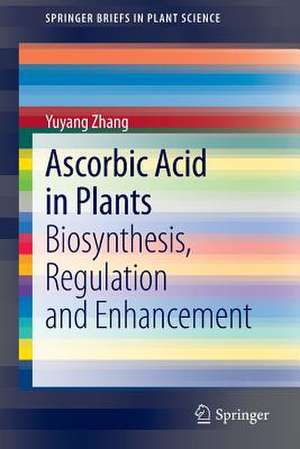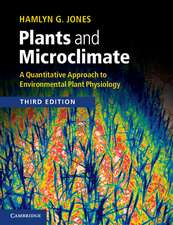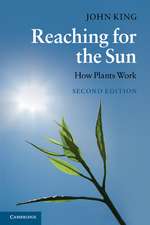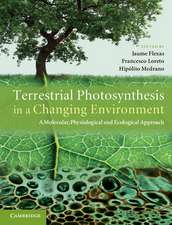Ascorbic Acid in Plants: Biosynthesis, Regulation and Enhancement: SpringerBriefs in Plant Science
Autor Yuyang Zhangen Limba Engleză Paperback – 4 aug 2012
Din seria SpringerBriefs in Plant Science
-
 Preț: 345.63 lei
Preț: 345.63 lei -
 Preț: 379.09 lei
Preț: 379.09 lei -
 Preț: 375.23 lei
Preț: 375.23 lei -
 Preț: 377.18 lei
Preț: 377.18 lei -
 Preț: 376.80 lei
Preț: 376.80 lei -
 Preț: 378.71 lei
Preț: 378.71 lei -
 Preț: 379.09 lei
Preț: 379.09 lei -
 Preț: 376.59 lei
Preț: 376.59 lei -
 Preț: 374.30 lei
Preț: 374.30 lei -
 Preț: 377.73 lei
Preț: 377.73 lei -
 Preț: 381.59 lei
Preț: 381.59 lei -
 Preț: 375.07 lei
Preț: 375.07 lei -
 Preț: 349.10 lei
Preț: 349.10 lei -
 Preț: 379.86 lei
Preț: 379.86 lei -
 Preț: 479.67 lei
Preț: 479.67 lei -
 Preț: 441.47 lei
Preț: 441.47 lei -
 Preț: 375.45 lei
Preț: 375.45 lei -
 Preț: 376.59 lei
Preț: 376.59 lei -
 Preț: 377.73 lei
Preț: 377.73 lei -
 Preț: 378.71 lei
Preț: 378.71 lei -
 Preț: 376.22 lei
Preț: 376.22 lei - 15%
 Preț: 460.75 lei
Preț: 460.75 lei -
 Preț: 376.80 lei
Preț: 376.80 lei -
 Preț: 410.77 lei
Preț: 410.77 lei -
 Preț: 376.22 lei
Preț: 376.22 lei
Preț: 379.09 lei
Nou
Puncte Express: 569
Preț estimativ în valută:
72.55€ • 78.78$ • 60.94£
72.55€ • 78.78$ • 60.94£
Carte tipărită la comandă
Livrare economică 23 aprilie-07 mai
Preluare comenzi: 021 569.72.76
Specificații
ISBN-13: 9781461441267
ISBN-10: 1461441269
Pagini: 90
Ilustrații: XIV, 117 p. 14 illus., 9 illus. in color.
Dimensiuni: 155 x 235 x 20 mm
Greutate: 0.2 kg
Ediția:2013
Editura: Springer
Colecția Springer
Seria SpringerBriefs in Plant Science
Locul publicării:New York, NY, United States
ISBN-10: 1461441269
Pagini: 90
Ilustrații: XIV, 117 p. 14 illus., 9 illus. in color.
Dimensiuni: 155 x 235 x 20 mm
Greutate: 0.2 kg
Ediția:2013
Editura: Springer
Colecția Springer
Seria SpringerBriefs in Plant Science
Locul publicării:New York, NY, United States
Public țintă
ResearchCuprins
Preface.- Chapter 1. Chemical feature.- Chapter 2. The biological role of ascorbate in plants.- Chapter 3. Ascorbate biosynthesis in plants.- Chapter 4. The oxidization and metabolism of ascorbate.- Chapter 5. Recycling of ascorbate.- Chapter 6. Transport of ascorbate.- Chapter 7. Key enzymes involved in ascorbate biosynthesis and metabolism.- Chapter 8. Regulation of ascorbate biosynthesis. - Chapter 9. Ascorbate in tomato, a model fruit. - Chapter 10. Metabolic modification of ascorbate in plants.- Chapter 11. Regulating ascorbate biosynthesis and metabolism for abiotic stress tolerance in plants.- References.- Index.
Caracteristici
New addition to the Springer. Brief in Plant Sciences series Covers the newest advances in this important protein Comprehensive and up-to-the-minute information Includes supplementary material: sn.pub/extras





